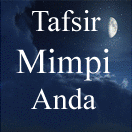A rapidly circulating column of air with a central
zone of intense low pressure that reaches the ground.
Most tornadoes extend from the bottom of severe thunderstorms
or supercells as funnel-shaped clouds that kick up
massive amounts of dust and debris as they rip across the surface.
The exact shape of tornadoes is quite variable, from
thin rope-like funnels, to classic cylindrical shapes, to powerful
and massive columns that have almost the same diameter
on the ground as at the base of the cloud. Many tornadoes
evolve from an immature upward swirling mass of dust to
progressively larger funnels that may shrink and tilt as their
strength diminishes. Funnel clouds are essentially tornadoes
that have not reached the ground. More tornadoes occur in
the United States than anywhere else in the world, with most
of these occurring in a region known as “tornado alley,”
extending from Texas through Oklahoma, Nebraska, Kansas,
Iowa, Missouri, and Arkansas.
Most tornadoes rotate counterclockwise (as viewed from
above) and have diameters from a few hundred feet to huge
systems with diameters of a mile or more. Wind speeds in
tornadoes range from about 40 miles per hour to more than
300 miles per hour (65–480 km/hr) and may move forward
at a few miles per hour to more than 70 miles per hour
(2–115 km/hr). Most tornadoes last for only a few minutes
but some last longer, with some reports of massive storms
lasting for hours and leaving trails of destruction hundreds of
miles long. Some supercell thunderstorms produce families or
outbreaks of tornadoes with half a dozen or more individual
funnel clouds produced, over the course of a couple of hours,
from a single storm.
The strength of winds and potential damage of tornadoes
is measured by the Fujita scale, proposed by the tornado
expert Dr. Theodore Fujita. The scale measures the rotational
speed (not the forward speed) and classifies the tornadoes
into F0–F5 categories.
Many tornadoes form in the mid-western states’ tornado
alley in the springtime when warm moist air from the Gulf of
Mexico is overrun by cold air from the north. Tornadic
supercell thunderstorms form in front of the cold front as the
warm moist air is forced upward in front of the cold air in
this region. Many tornadoes are also spawned by supercell
thunderstorms that have large rotating updrafts. Spinning roll
clouds and vortexes may form as these storms roll across the
plains, and if these horizontally spinning clouds are sucked
into the storm by an updraft, the circulation may be rotated
to form a tornadic condition that may evolve into a tornado.
Before the supercell spawns a tornado, rotating clouds may
be visible, and then a wall cloud may descend from the rotating
vortex. Funnel clouds are often hidden behind the wall
cloud, so these types of clouds should be eyed with caution.
Some tornadoes have formed from smaller and even
non-severe thunderstorms, from squall lines, and even smaller
cumulus clouds. These types of tornadoes are usually shortlived
and less severe (F0–F1) than the supercell tornadoes.
Waterspouts are related phenomena and include tornadoes
that have migrated over bodies of water, and they may also
form in fair weather over warm shallow coastal waters.
These weak (F0) funnel clouds form in updrafts, usually
when cumulus clouds are beginning to form above the coastal
region. Their formation is aided by converging surface air,
such as when sea breezes and other systems meet.
See also THUNDERSTORMS.
Fujita Tornado Scale
Scale Category Wind Speed Damage Potential
FO weak 40–72 mph Minor; broken tree branches, damaged signs
F1 weak 73–112 mph Moderate; broken window, trees snapped
F2 strong 113–157 mph Considerable; large trees uprooted, mobile homes tipped, weak structures destroyed
F3 strong 158–206 mph Severe; trees leveled, walls torn from buildings, cars flipped
F4 violent 207–260 mph Devastating; frame homes destroyed
F5 violent 261–318 mph Incredible; strong structures damaged, cars thrown hundreds of yards
trace fossil See BIOGENIC SEDIMENT; ICHNOFOSSILS.

















Tidak ada komentar:
Posting Komentar
Catatan: Hanya anggota dari blog ini yang dapat mengirim komentar.